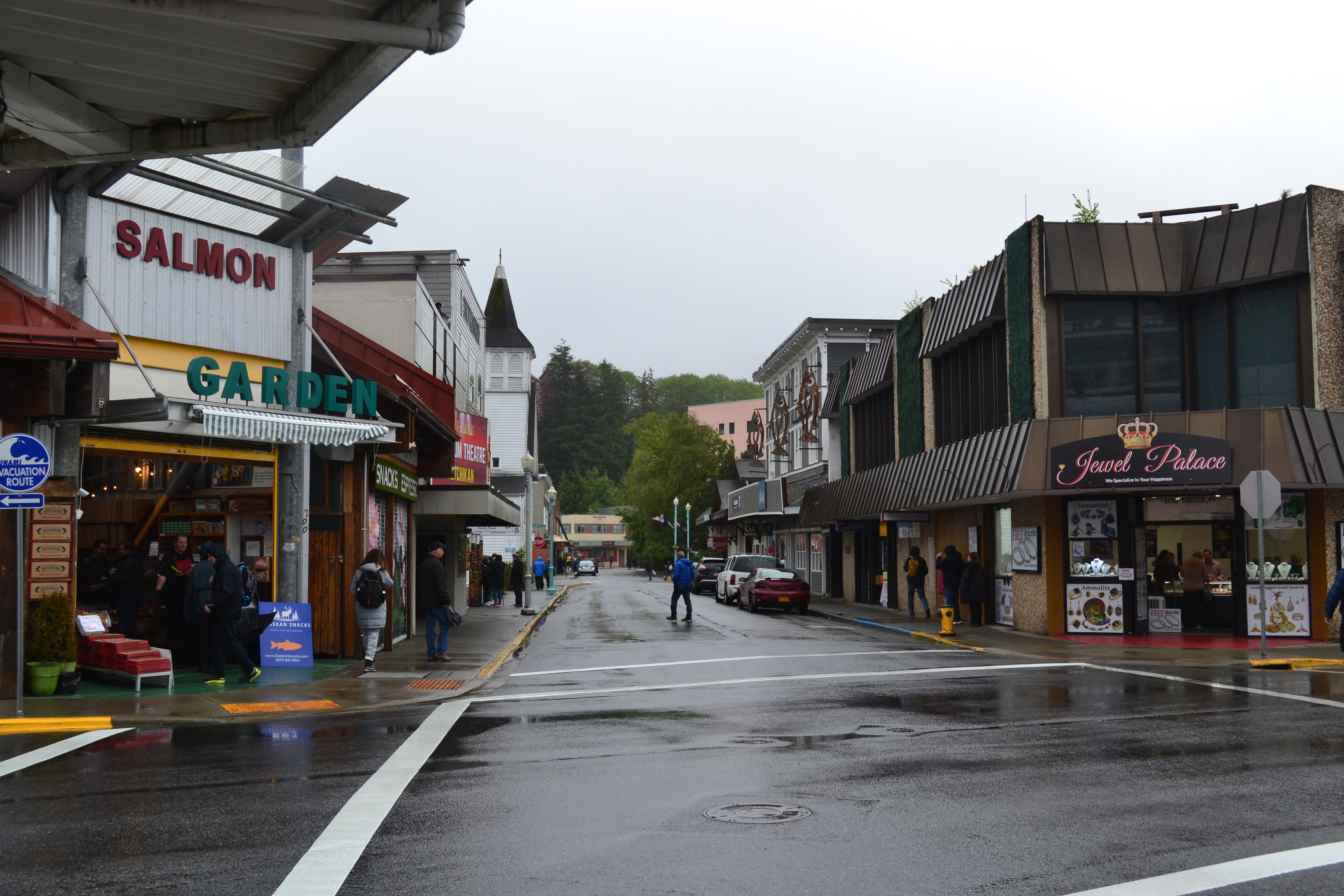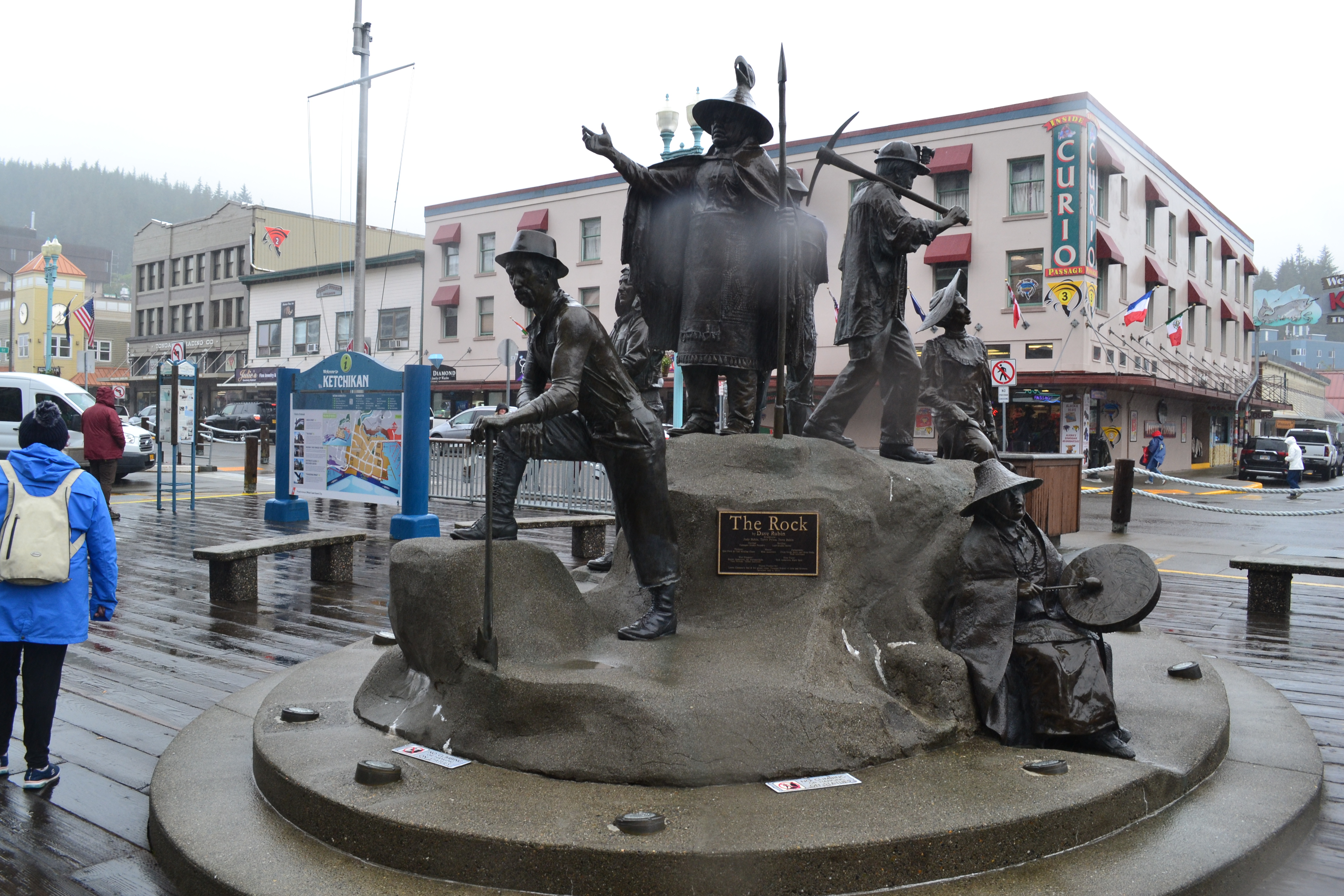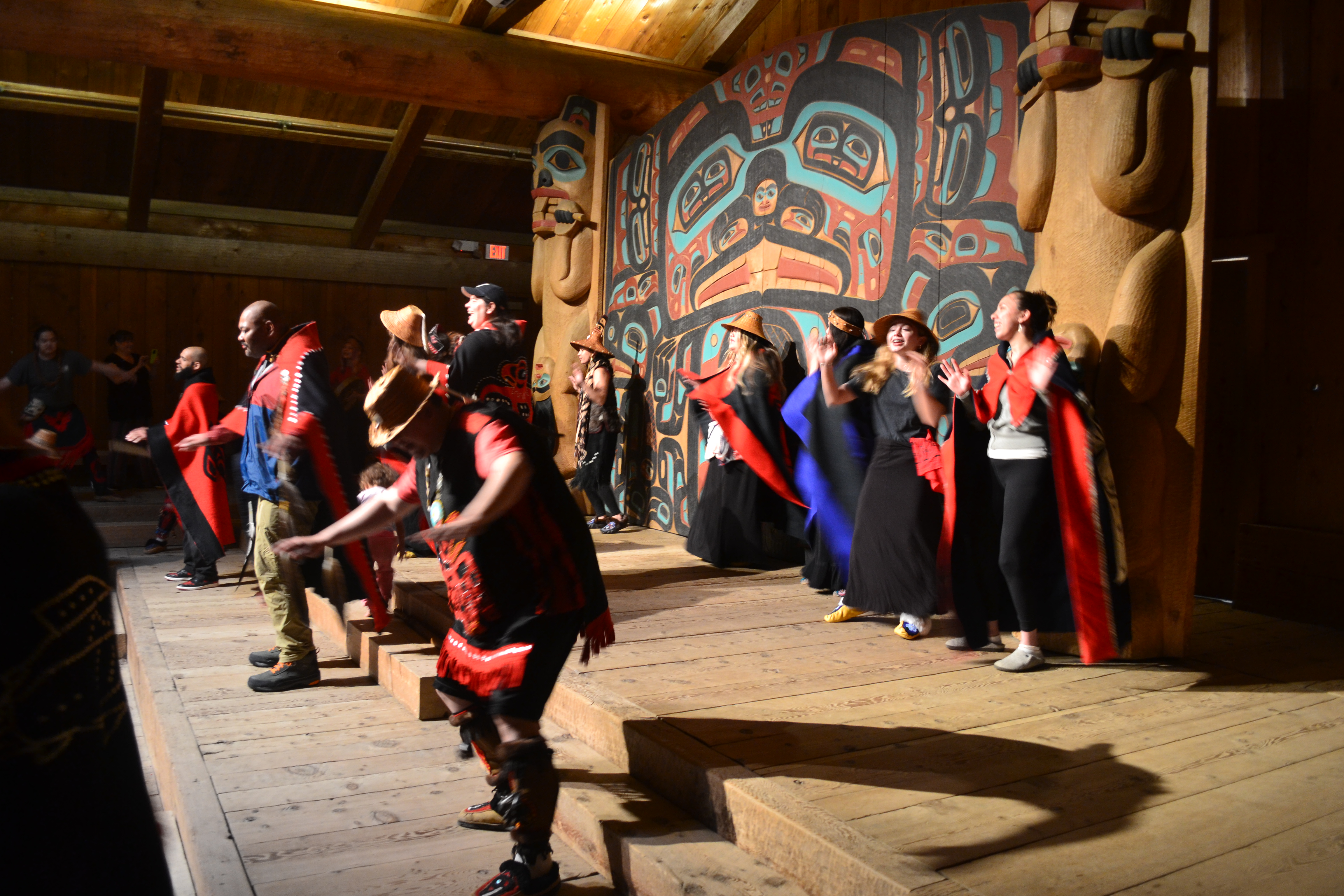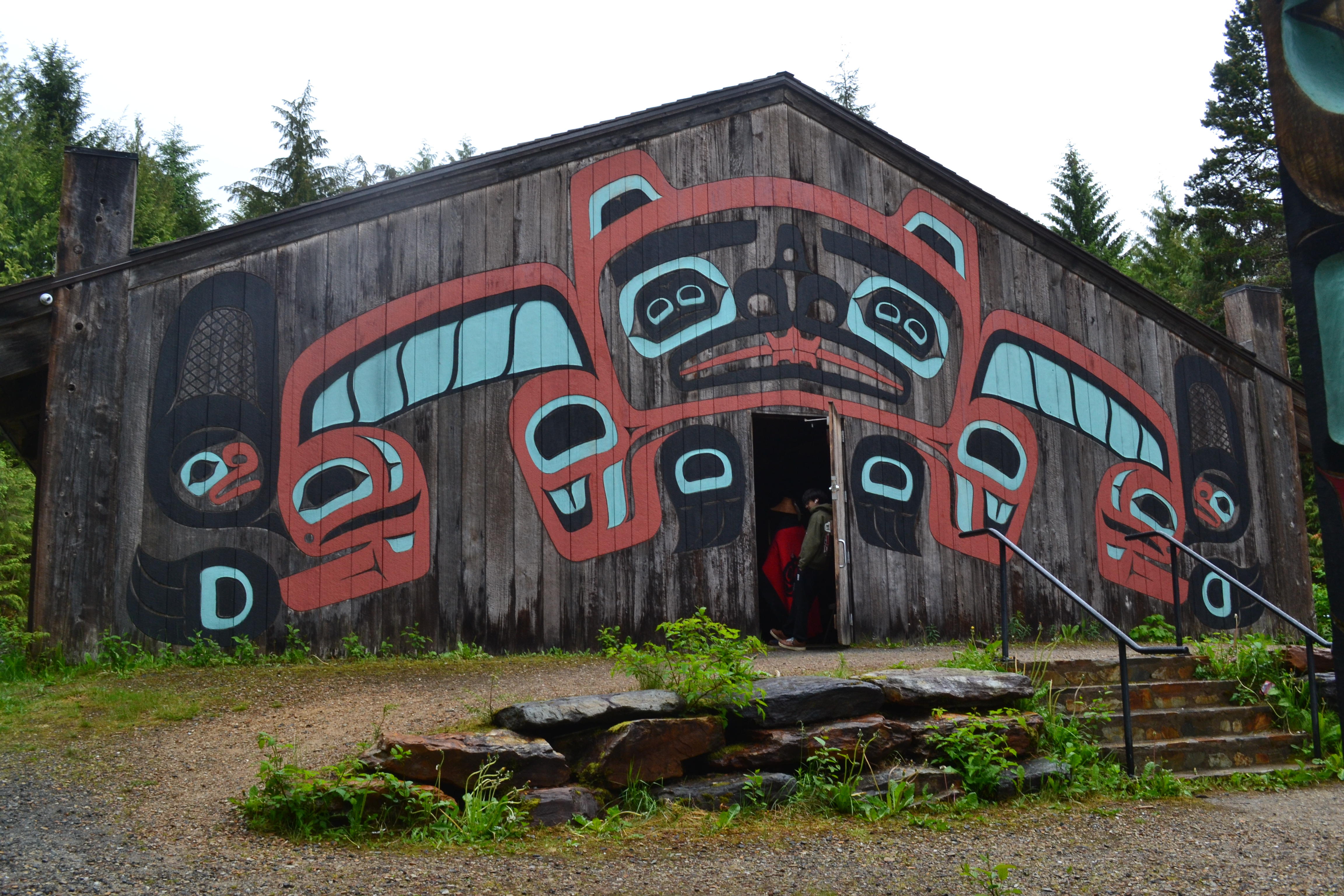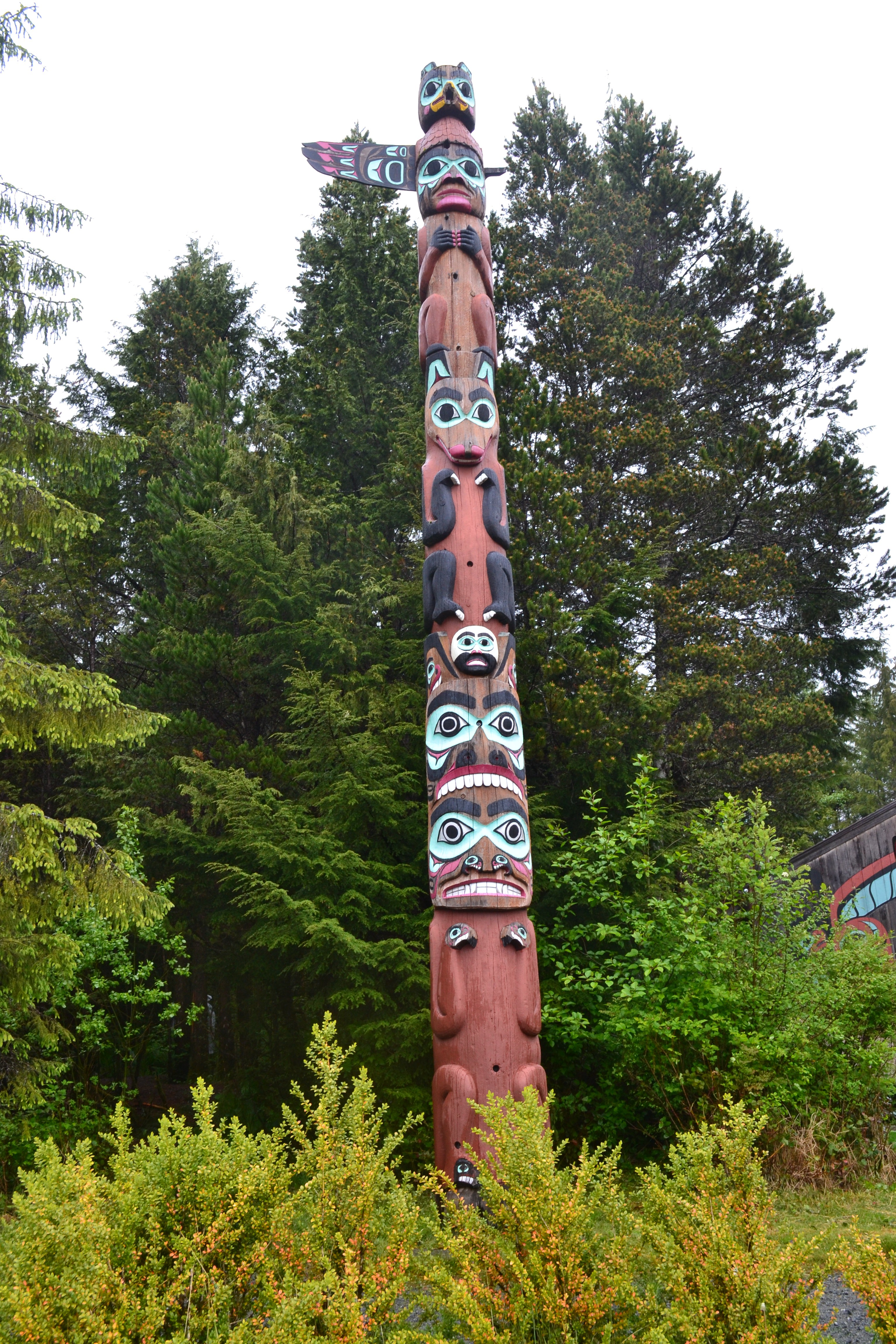You may have heard that Alaska as a state of weather extremes and you’re not wrong. The lowest recorded temperature in Alaska was -80O F (-62OC) recorded in 1971 at Prospect Creek Camp whereas the highest temperature was 100OF (38OC) at Fort Yukon in 1915. However, the weather in South eastern Alaska is far milder and more predictable, according to U.S. Climate Data you might see summer highs of about 60-65OF (15-18OC) and winter lows of about 30OF (-1OC) in Ketchikan.
While Alaska is one of the drier states overall, in Ketchikan the average annual rainfall is between 140 and 160 inches per year which makes it one of the rainiest cities in America as it receives 261% more rain than the national average. It is therefore no wonder that the locals boast that, as well as being “The Salmon Capital of the World”, Ketchikan is also the rain capital of Alaska. A boast which appears well founded on the day we disembarked and stepped into a soaking wet landscape and a sky full of rain, that steady continuous kind that will quickly drench you if you’re not wearing a waterproof, which some forward planning had ensured we were wearing.
With an hour to wait before we can join the bus to take us to the Saxman Totem Village, some 6 Km away, it’s exploration time. Situated in pride of place on the dockside is a bronze sculpture by Dave Rubin symbolising Ketchikan’s heritage called The Rock. The Rock tells the story of how Alaska’s first city came into being. Six of the seven life size figures represent a prominent archetype in the city’s history: fisherman; miner; logger; bush pilot; frontierswoman and a native Tlinget drummer. The seventh figure represents an actual historical figure, Chief Johnson a Tlinget who stands on top of the rock symbolising the fact that his people settled in South East Alaska before the others.
Just past The Rock is a tourist shop full of the usual nik-naks with the Visitor’s Centre adjoining it with the usual local attraction fliers, street maps and of course Postcards. It’s always good to have a local postcard with a proper franked stamp from the place you’re visiting as a memento, and to send to those jealous friends and relations back home. However, due to the vagaries of the US system we had to get postage stamps from a shop under the clock in Grant Street, before we could return to the Visitor Centre to post them in the official Post box.
Walk around local area and there are so many gift shops, which is to be expected, and surprisingly from our point of view almost all selling knives of every conceivable shape and style. A bit of a shock to start with, but after thinking about it this is to be expected as Alaska is supposed to be a ‘wilderness’ state where the old skills are still prized and sometimes required. To lighten the mood a little the rain eases to just a steady drizzle, but luckily there are Coffee shops aplenty to revitalise and to take refuge in for a moment. Some are also selling some singular meat snacks: Caribou; Moose; Bison; Elk; Reindeer and regular beef. Samples of which must be bought to be sampled later and I can report that some of the snacks are more palatable than are others; in particular the Caribou was certainly an acquired taste. You can also purchase genuine locally roasted ‘Alaskan’ coffee beans with off-beat names, e.g. ‘Three Peckered Billy Goat’ which, according to the blurb on the packet is: “Velvety mouthfeel, superb body. Uncanny high notes of fruity sweetness hover over a dry-chocolate base”. However, to my unsophisticated palate the coffee tastes very similar to other good quality coffees, but who am I to judge.
10.30 approaches and it’s time to find our bus for the short ride to the Saxman Totem Village down the South Tongass Highway. We enter a small spread out village with a school, community centre, workshops and low rise houses and pull up into the main car park exiting the bus we have a quick look around while we wait for our guide. Scattered around the park are large logs waiting to be carved as well as a couple of old totems that have succumbed to nature and left to rot away and return to nature. The up-hill side of the park is a forested area that looks like it is ‘left to nature’ where fallen timber has just been left to rot to provide natural nutrients for those that remain. All the timber, standing or not is covered with moss and lichen, testament to the undisturbed nature and also the moisture soaked atmosphere.
After 10 minutes or so we are motioned by a young girl wearing a traditional conical woven straw hat, who we subsequently find out is to be our guide and that this is her first tour and consequently tries to cover up her understandable nervousness with displays of bravado as we make our way to the Saxman Beaver Clan house. This is a large building made of red cedar with its gable end painted with the emblem of the Beaver Clan. The building is a clan meeting house with a raised stage area at the end, abutted by a pair of totems, and a wooden backdrop painted with the same image from the building exterior, a raised seating around the outside and a clear area in the centre. After a brief introduction from an elder seemingly hiding at the far side of the stage, a chant starts from behind the stage and a number of performers, both young and old appear wrapped in traditional blankets of black, red or blue each embroidered with colourful emblems come forward and promptly turned their backs on the audience. It was explained that this was not in fact a display of rudeness, but simply a way of displaying their clan emblem to prove their attendance. They begin to dance and sing traditional songs of welcome, which lasts for 15-20 minutes and concludes with audience members being asked to come forward to join in and act as chiefs of the invited clans and have their photos taken with the native children from the display.
Outside we gather at the base of a flight of steps and are given an opportunity to have a close look at the numerous totems surrounding the area and are given a short talk on their meaning and the rules for the order of the images on the poles and then undertook a short Q&A session. When completed we were shown to the Totem workshop for a brief explanation of the totem history and meaning and then a demonstration of how totems are constructed. Passing as we did an old totem set on some trestles outside the workshop obviously waiting its turn for some TLC. However, there appears to be a hiccup as it turns out that the master totem maker is unexpectedly been called away and thus leaving his colleague is a little under prepared. Our young guide bravely tries to carry on, but eventually has to relent and allow the builder in attendance to carry on with the explanation of how and the poles are constructed and how they are erected which turns out to be not a million miles away from how the stones of Stonehenge were stood up.
The demonstration over we make our way out to wait for the bus drivers to return and take us back to our waiting vessels, allowing us some time to explore some more of the area and get a close up look at some of the non-totem carvings and works dotted around. In particular a square pole at the car park entrance set not unlike a sign post, but with carved bald eagles instead of finger posts to point the way, but without any visible sign as to what lay where.
Back at the ship we brace ourselves for our first experience of getting back on board and pass through airport style security with metal detectors, x-ray machines and if necessary body scans, certainly a new experience for us. We make it through safely with my wife’s metal knee the only excitement and it’s straight up for a coffee and a reminiscence of our first expedition of the cruise and hope that the plucky young girl gets another chance to take a tour in the near future and puts this one down to experience. We also discover that at least the coats have done their job well we are dry on the inside at least, so it is Gortex 1 – Alaska 0.
